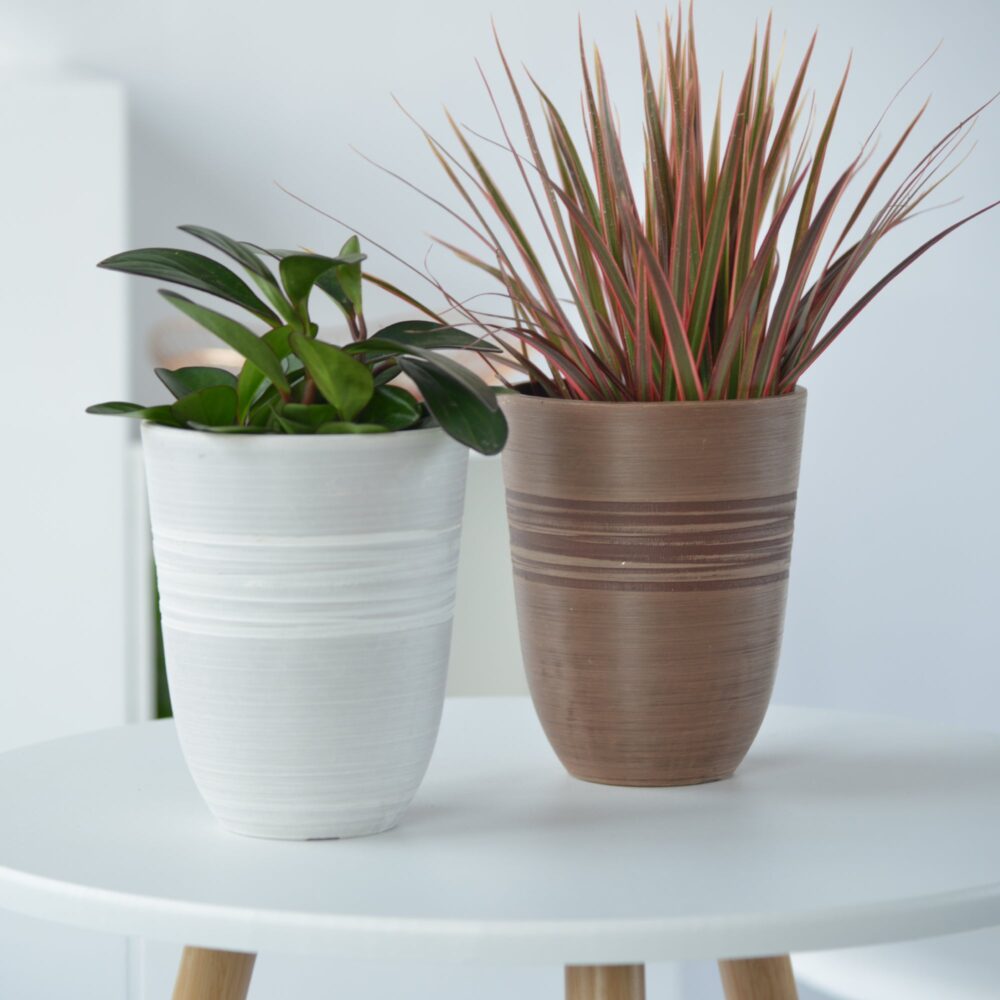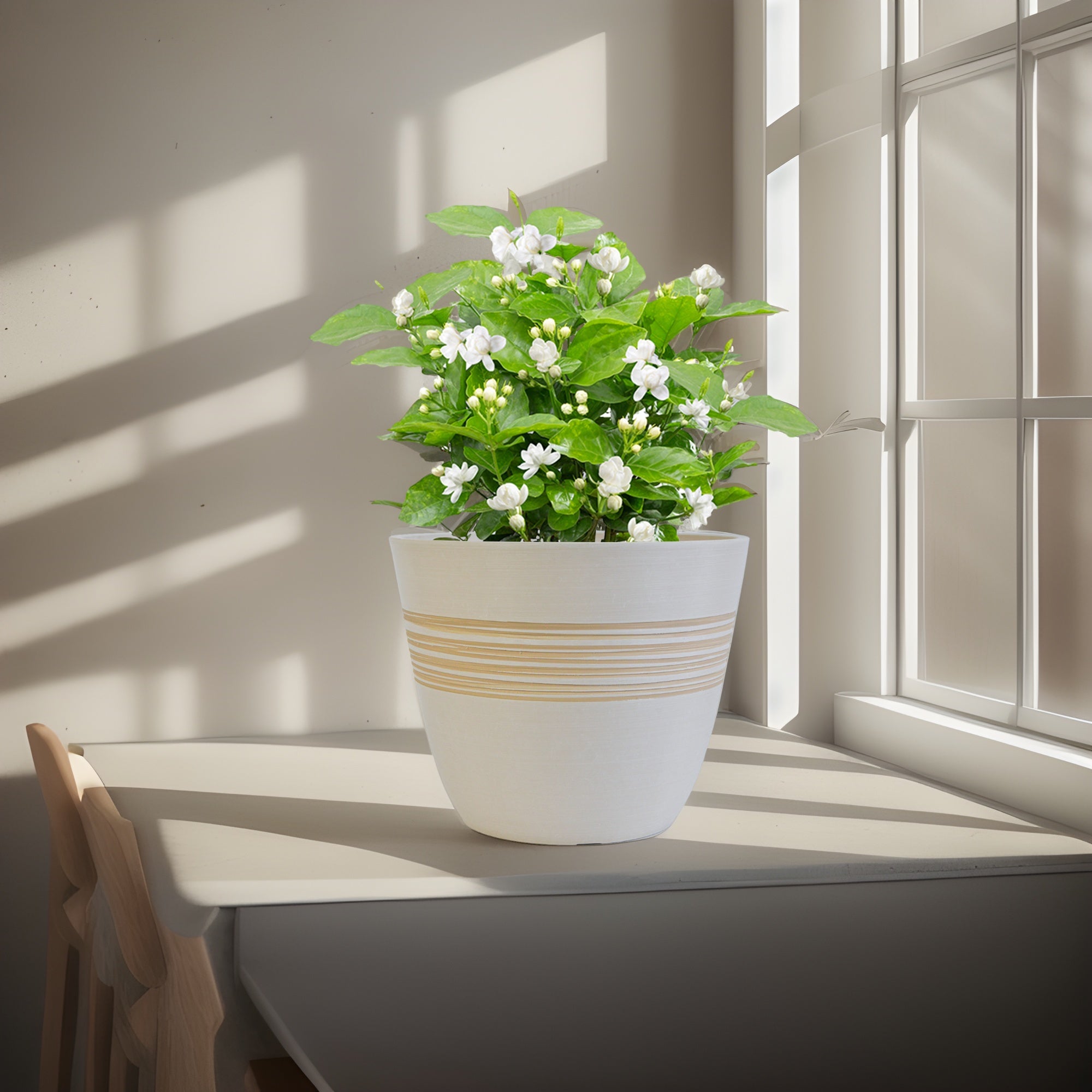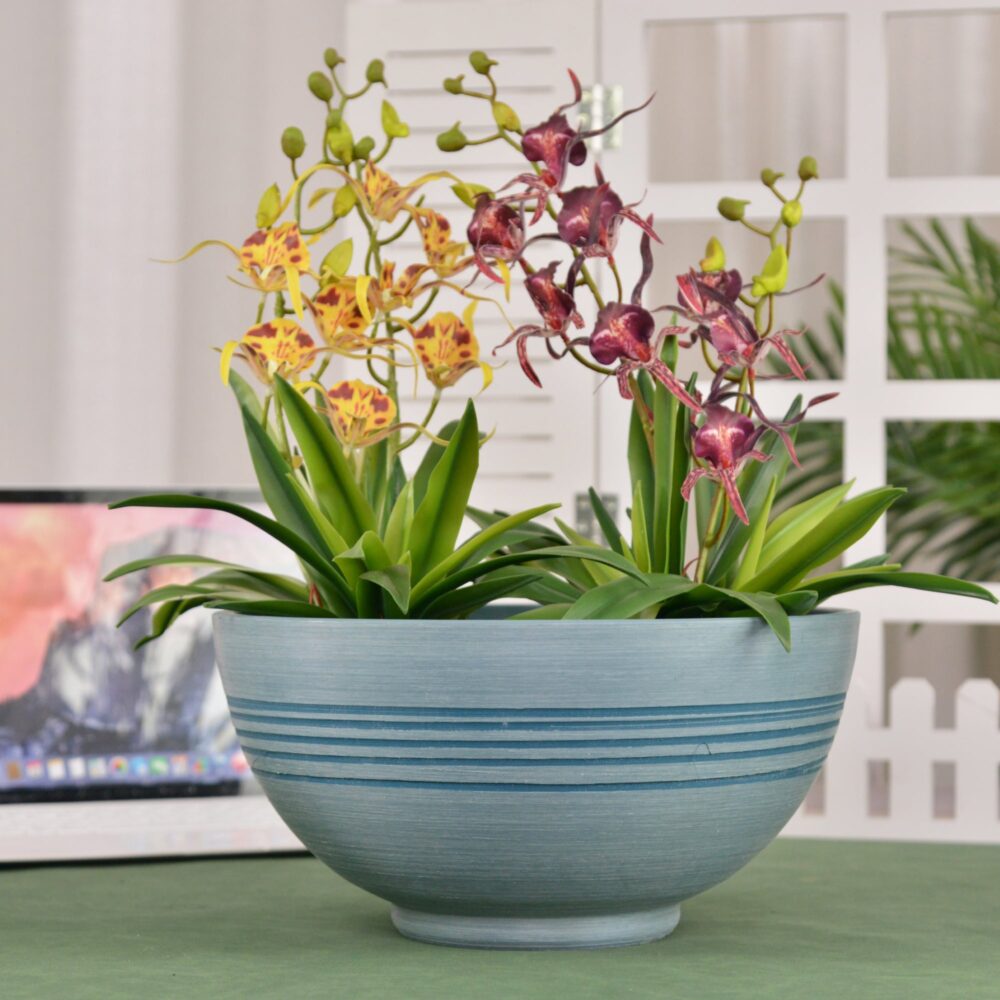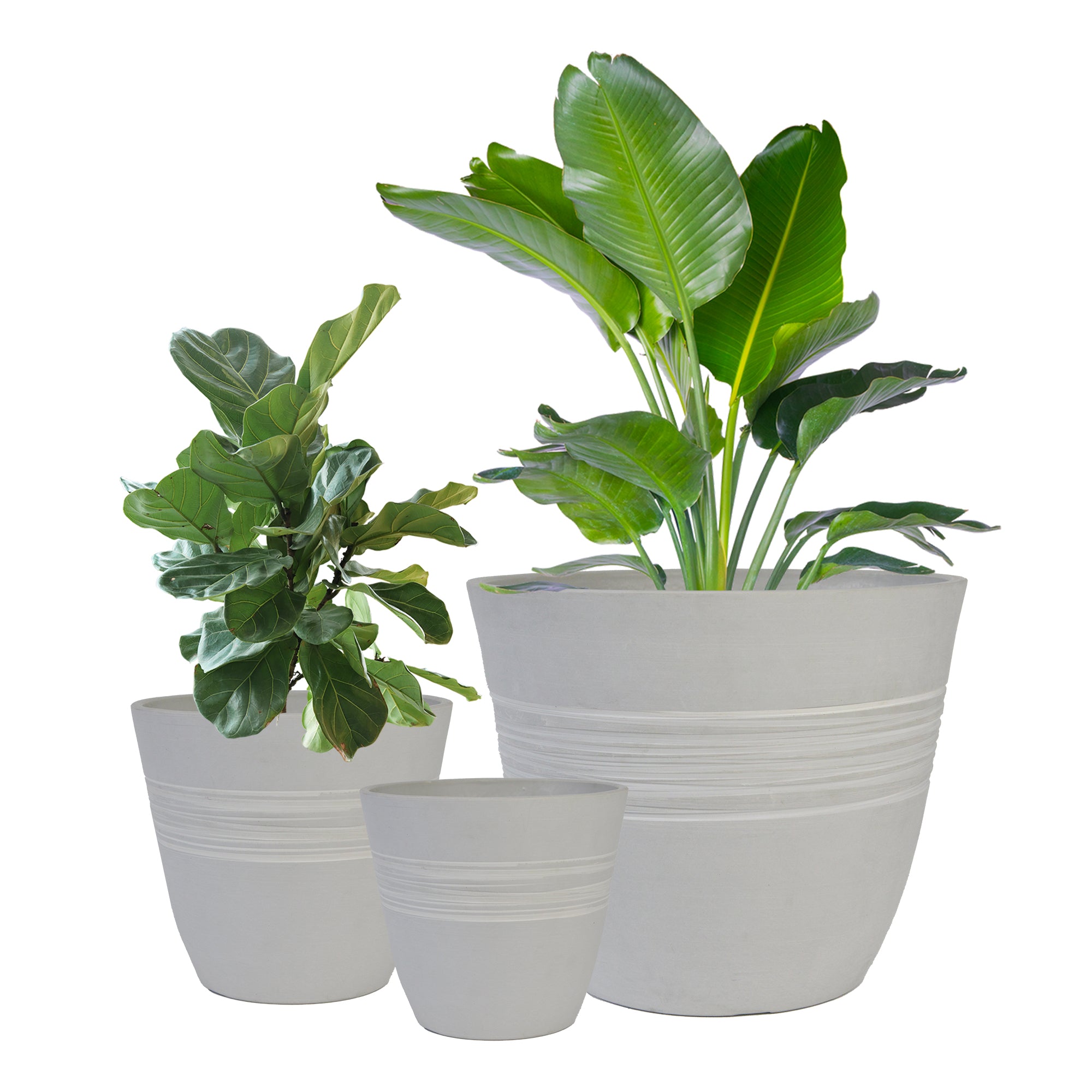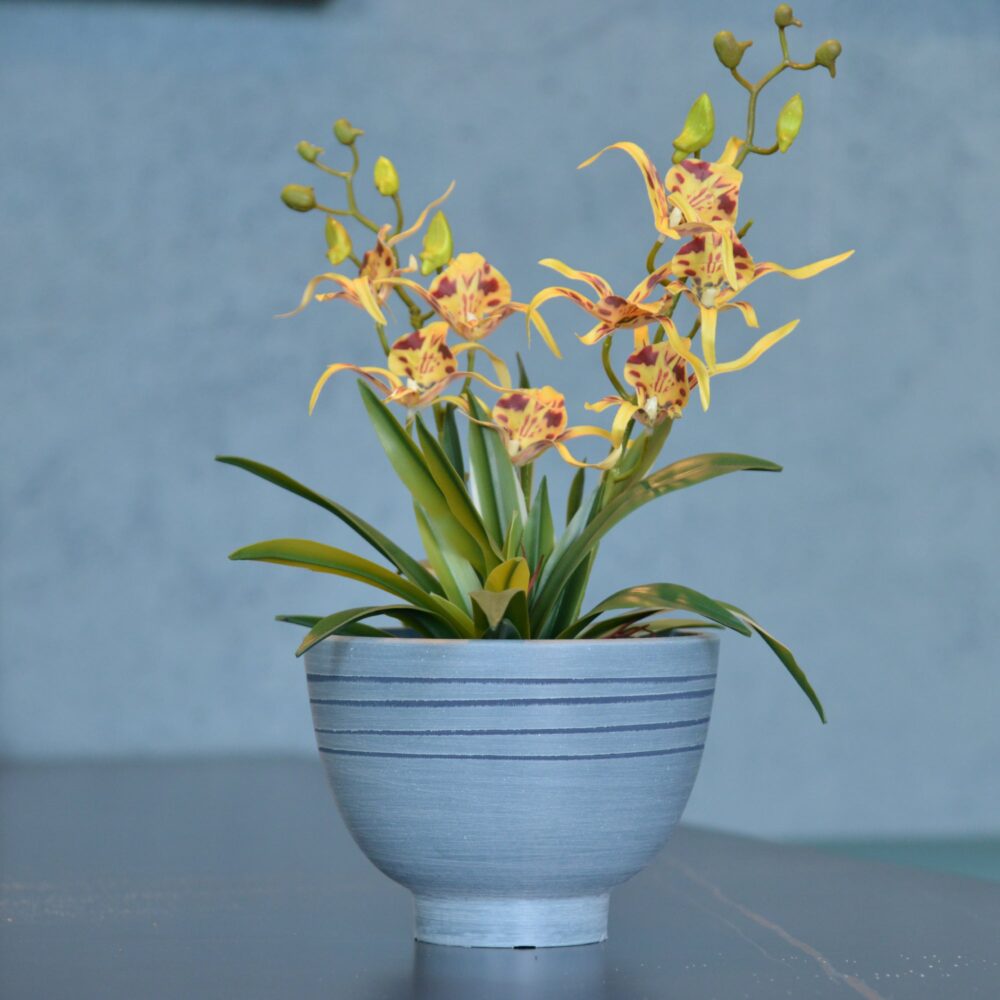Bellflowers in Pots: The Complete Guide to Growing Campanula Outdoors in Containers (Charming & Easy!)
Want to add a touch of whimsical charm and delightful color to your patio, balcony, or garden? Growing Bellflowers(Campanula) in containers is a wonderfully rewarding and surprisingly easy way to bring these enchanting flowers into your outdoor spaces. Celebrated for their bell-shaped, often blue or purple flowers, their long blooming season, their diverse forms (from tall spires to low-growing mounds), and their adaptability to container gardening, Bellflowers are perfect for adding a touch of cottage garden beauty and cheerful color to your outdoor living areas. This comprehensive guide will provide you with everything you need to know to grow Bellflowers successfully in outdoor pots, from selecting the best varieties and containers to mastering essential care techniques for a stunning and long-lasting floral display.
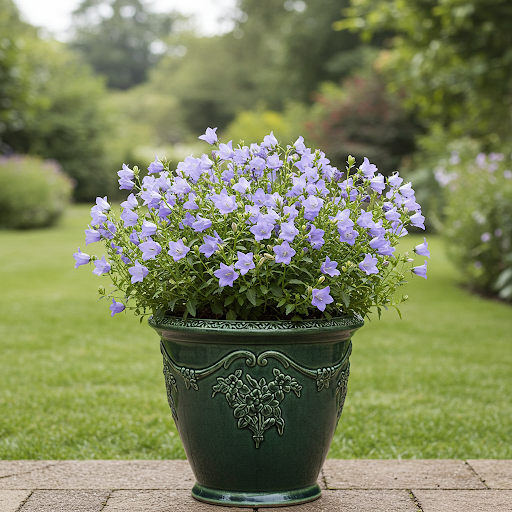
Bellflowers
What are Bellflowers?
Bellflowers, scientifically known as Campanula, are a diverse genus of herbaceous flowering plants belonging to the Campanulaceae family (Bellflower family). Found in temperate regions around the world, they are widely cultivated as popular garden ornamentals, prized for their charming bell-shaped flowers, long bloom times, variety of colors and forms, and relative ease of care. Bellflower plants are characterized by their bell-shaped, star-shaped, or cup-shaped flowers, which come in a wide range of colors, most famously blue and purple, but also white, pink, and lavender. They exhibit a wide variety of growth habits, from tall, upright spires to low-growing, spreading mounds and trailing forms, making them versatile for various garden uses, including borders, rock gardens, ground cover, and container gardening. Bellflowers are known for their cottage garden appeal, their attractiveness to pollinators like bees and butterflies, their use in both formal and informal garden designs, and their ability to bring a touch of classic floral beauty to any outdoor space. The name Campanula itself is derived from the Latin word for “bell,” referring to the characteristic flower shape.
Are Bellflowers Good for Outdoor Pots?
Yes, Bellflowers are exceptionally well-suited for outdoor pots and container gardening, and are a popular choice for adding vertical interest, cascading color, or charming groundcover effects to patios, balconies, and other outdoor areas. Their adaptability to container culture, manageable size in pots (especially for compact and trailing varieties), long blooming season, beautiful flowers, and relative ease of care make them ideal for container cultivation. Growing Bellflowers in pots offers several advantages:
- Ideal for Patios and Balconies: Container gardening allows you to enjoy Bellflowers even if you have limited garden space, such as on balconies, patios, or decks. They bring a touch of cottage charm and vertical interest to paved areas.
- Portability: Potted Bellflowers can be easily moved to optimal locations for sunlight, display, or shelter from extreme weather. You can rearrange them to create stunning focal points or seasonal displays. Bring them indoors to protect from extreme heat or heavy rain if needed.
- Controlled Environment: Container gardening allows you to provide the specific well-draining soil mix that Bellflowers prefer and control watering and fertilization more precisely, which is important for their health and flowering.
- Design Versatility: Bellflowers in pots can be used as standalone specimen plants in decorative pots, grouped together for a massed display of color, incorporated into mixed container arrangements with other annuals and perennials, or used in hanging baskets and window boxes (especially trailing varieties). Their diverse forms allow for various container gardening styles.
- Pest and Disease Management: Container growing can help reduce some soilborne pest and disease issues that can affect Bellflowers planted directly in the ground.
- Highlighting Specific Varieties: Container growing allows you to showcase specific Bellflower varieties with unique colors, forms, or growth habits in a more focused way.
Ideal Growing Conditions for Bellflowers in Pots:
Types of Bellflowers for Pots: Many Campanula species and cultivars are suitable for container growing, but some are particularly well-suited based on their size and growth habit:
- Dwarf or Compact Bellflower Varieties: Look for varieties described as “dwarf,” “compact,” “patio,” or “container-friendly.” These are bred to be smaller and more manageable in pots. Examples include Campanula carpatica (Carpathian Bellflower) cultivars like ‘Blue Clips’, ‘White Clips’, ‘Deep Blue Clips’ (mounding, compact), Campanula portenschlagiana (Dalmatian Bellflower) ‘Birch Hybrid’ (low-growing, spreading), Campanula garganica (Adriatic Bellflower) ‘Dickson’s Gold’ (low-growing, spreading, golden foliage).
- Trailing Bellflower Varieties: Trailing Bellflowers are excellent for hanging baskets and spilling over the edges of pots. Examples include Campanula isophylla (Italian Bellflower) and its cultivars (trailing, profuse bloomer), Campanula poscharskyana (Serbian Bellflower) ‘Stella’ (trailing, vigorous).
- Taller, Upright Bellflower Varieties (in larger pots): Taller varieties can be grown in larger, more substantial pots to provide vertical interest. Examples include Campanula persicifolia (Peach-leaved Bellflower) (upright spires), Campanula lactiflora (Milky Bellflower) (tall, branching). Choose sturdier pots for taller varieties to prevent toppling.
- Biennial Bellflowers (for seasonal displays): Biennial Bellflowers like Campanula medium (Canterbury Bells) can be grown in pots for a stunning spring/early summer display, although they complete their life cycle in two years. Treat them as annuals or biennials in containers.
Light: Bellflowers generally prefer full sun to partial shade. They thrive in full sun in cooler climates, but in hotter climates like Singapore, they appreciate partial shade, especially during the hottest part of the afternoon. Morning sun and afternoon shade, or dappled sunlight throughout the day, is ideal. When grown in pots outdoors, position them in a location that receives morning sun and afternoon shade, or bright, indirect light. Avoid very harsh, intense afternoon sun, which can scorch leaves, especially in hotter climates. Too much dense shade can reduce flowering and lead to leggy growth. Aim for at least 6 hours of sunlight or bright indirect light per day for best flowering.
Soil: Bellflowers need well-draining soil that is also moisture-retentive and moderately fertile. Use a high-quality general-purpose potting mix. Amend potting mix with compost, well-rotted manure, peat moss or coco coir, and perlite or vermiculite to improve fertility, drainage, water retention, and aeration. Good drainage is essential to prevent root rot, but Bellflowers also appreciate consistent moisture, so the soil should not dry out too quickly. A slightly acidic to neutral pH (around 6.0-7.0) is ideal.
Watering: Bellflowers prefer consistently moist soil during their active growing and blooming season, but they don’t want to be waterlogged. Water thoroughly when the top inch of soil feels slightly dry. Water deeply until water drains out of the drainage holes. Then, allow the topsoil to slightly dry before watering again. Avoid overwatering and consistently soggy soil, which can lead to root rot. Also, avoid letting the soil dry out completely, especially when plants are actively growing and blooming. Bellflowers prefer a “moist but not soggy” soil environment. Watering frequency will depend on weather conditions, light levels, pot size, and Bellflower variety. Water more frequently during warmer, drier periods and less frequently during cooler, cloudier periods. Reduce watering slightly in winter, especially for perennial types that may have some dormancy.
Temperature: Bellflowers are generally cool-season plants and thrive in moderate temperatures, ideally between 60-75°F (15-24°C) during the growing season. They prefer cooler temperatures and may struggle in intense heat, especially in full sun. In Singapore’s consistently warm climate, Bellflowers may perform best during the slightly cooler months or in partially shaded locations. Provide afternoon shade in hot weather to help them cope with heat stress. Some Bellflower varieties are more heat-tolerant than others. Consistent cool to moderate temperatures are beneficial for prolonged flowering.
Humidity: Bellflowers prefer moderate humidity. High humidity is generally not a problem in Singapore, but good air circulation is always beneficial to prevent fungal diseases, especially in humid climates.
Fertilizer: Bellflowers are moderate feeders and benefit from regular fertilization during the active growing and blooming season to support healthy growth and abundant flowering. Fertilize every 4-6 weeks during the spring and summer growing season. Use a balanced liquid fertilizer (e.g., 10-10-10 or 20-20-20) diluted to half strength, or a fertilizer specifically formulated for flowering plants or perennials. Follow product label instructions for application rates. A fertilizer slightly higher in phosphorus (the middle number) can encourage better flowering. Avoid over-fertilizing, which can lead to weak, leggy growth and fewer flowers. You can also amend the potting mix with slow-release fertilizer granules at planting time for a season-long feeding. Reduce or stop fertilizing in late summer or fall as growth naturally slows down.
Choosing the Right Pots for Bellflowers:
Suitable Pot Types: Bellflowers can be grown in various pot types, but good drainage and appropriate size are important. Suitable pot types include:
- Terracotta Pots: Terracotta is a good choice as it provides excellent drainage and aeration, helping to prevent overwatering, and offers a classic, natural look that complements Bellflowers. Smaller terracotta pots are ideal for dwarf varieties, while larger ones can be used for taller types.
- Ceramic Pots: Glazed or unglazed ceramic pots can be used, offering a wide range of decorative styles. Ensure they have drainage holes. Choose based on your desired aesthetic and pot size needs.
- Resin Pots: Lightweight, durable, available in styles mimicking terracotta or ceramic, and offer a balance of drainage and moisture retention. Resin pots are a good alternative to heavy terracotta or ceramic, and often more durable than terracotta or plastic. Choose sturdy resin pots.
- Plastic Pots (Sturdy, Dark Colors): Sturdy, good quality plastic pots can be used, especially for larger plants, as they are lightweight and durable. Ensure excellent drainage. Dark-colored plastic pots can help retain soil warmth, which can be beneficial in cooler climates, but may overheat in full sun in hot climates, so lighter colors or shading the pot may be preferable in Singapore.
- Hanging Baskets (for trailing varieties): Hanging baskets are ideal for trailing Bellflower varieties like Campanula isophylla and Campanula poscharskyana. Choose baskets with good drainage and use a well-draining potting mix.
Drainage: Good drainage is essential for Bellflowers to prevent root rot. Ensure your chosen pot has drainage holes at the bottom. Avoid pots without drainage holes. Always use a drainage layer at the base of the pot (e.g., a layer of gravel or pot shards) beneath the potting mix to further enhance drainage. Elevating pots slightly on pot feet or bricks can also improve drainage and air circulation.
Pot Size: Choose pot sizes appropriate for the size and type of Bellflower and your desired display. Bellflowers have moderate root systems and need room for root development and plant growth.
- Dwarf or Compact Bellflower Varieties: Start with pots that are at least 6-8 inches in diameter and depth.
- Trailing Bellflower Varieties (in hanging baskets or pots): Use hanging baskets or pots that are at least 8-12 inches in diameter.
- Medium-Sized Bellflower Varieties: Use pots that are 10-14 inches in diameter and depth or larger.
- Taller Bellflower Varieties: Use pots that are 12-16 inches in diameter and depth or larger for taller varieties like Campanula persicifolia or Campanula lactiflora. Choose wider, sturdier pots for taller varieties to provide stability.
- Depth: Pots should be at least 8-10 inches deep, and ideally 10-12 inches deep or more for larger varieties, to accommodate the root system and provide good soil volume.
Stability: For taller, upright Bellflower varieties, using moderately heavy pots (terracotta or ceramic) can provide good stability, especially as the plants grow taller and may become top-heavy, or if placed in slightly windy locations. Wider pots are generally more stable than tall, narrow pots. Dwarf and trailing varieties are less prone to toppling.
Color and Style: Choose pot colors and styles that complement the flower colors and charming form of your Bellflowers and your outdoor décor, and enhance their cottage garden appeal. Classic terracotta, pastel shades, white, or blue-toned pots can create a charming and cohesive look, highlighting the blue and purple hues of many Bellflower varieties. Whimsical or rustic pots can also enhance their cottage garden style. Consider the overall style of your patio or balcony and choose pots that harmonize with the surroundings and enhance the desired cheerful, cottage garden ambiance.
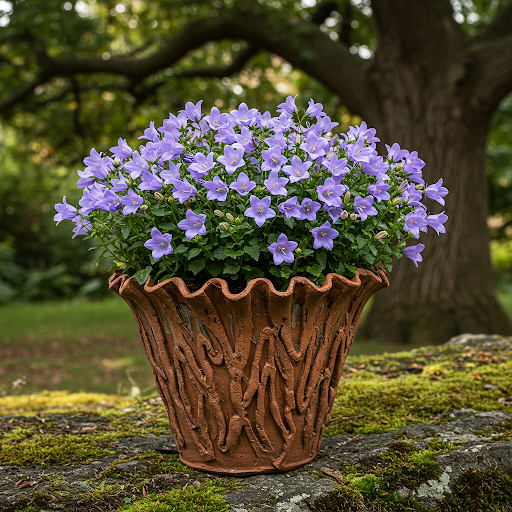
Bellflowers
Essential Care Tips for Thriving Bellflowers in Outdoor Pots:
- Watering: “Keep Soil Moist During Growing Season, Allow Topsoil to Slightly Dry Between Waterings”.Water thoroughly when top inch of soil is slightly dry during growing season. Water deeply and ensure good drainage. Allow topsoil to slightly dry between waterings. Avoid overwatering.
- Sunlight: Provide Full Sun to Partial Shade (Morning Sun, Afternoon Shade in Hot Climates). Place Bellflower pots in a location with full sun to partial shade outdoors. Provide afternoon shade in hot climates like Singapore.
- Fertilizing: Fertilize Every 4-6 Weeks During Growing Season with Balanced Liquid Fertilizer. Fertilize regularly during the spring and summer growing season to promote healthy growth and flowering. Use a balanced liquid fertilizer or flowering plant fertilizer. Reduce or stop fertilizing in late summer/fall.
- Deadheading (Encourage Continuous Bloom): Deadhead spent flowers regularly by snipping off faded blooms. This encourages the plant to produce more flowers and extends the blooming season.
- Pest and Disease Control (Generally Low Maintenance): Bellflowers are generally relatively pest and disease-free. Monitor for slugs, snails, or aphids occasionally. Ensure good air circulation to prevent fungal diseases, especially in humid climates.
- Winter Care (Minimal Care, Some Varieties May Benefit from Winter Protection in Colder Climates): Many Bellflower varieties are perennial and relatively hardy. In Singapore’s climate, no winter protection is needed. In colder climates, some perennial Bellflowers may benefit from winter mulching or moving pots to a sheltered location to protect from harsh winter conditions. Biennial types will complete their life cycle after flowering.
- Dividing (Perennial Varieties, Every Few Years): Perennial Bellflowers can be divided every 2-3 years in spring or fall if they become overcrowded or to propagate new plants.
Planter 6 in W / 8 in W / 12 in W Indoor or Outdoor Plants, Modern Decorative Plant Pots with Drainage Hole, Decorative Flower Pots
By greenship-seo|2025-02-06T13:43:53+00:00January 16, 2025|Categories: Hand-carving Series|Tags: Decorative Flower Pots|
Plant Pots 6 inch 8 inch 10 inch for Indoor Plants, Set of 3 Modern Decorative Planter ts with Drainage Hole, Decorative Flower Pots
By greenship-seo|2025-04-10T06:39:28+00:00January 14, 2025|Categories: Hand-carving Series|Tags: Decorative Flower Pots|
Planter for Indoor Outdoor Plants, Set of 2 Modern Decorative Plant Pots with Drainage Hole, Decorative Flower Pots
By greenship-seo|2025-04-10T07:46:01+00:00January 9, 2025|Categories: Hand-carving Series|Tags: Decorative Flower Pots, Self-Watering Pots|
13 inch Planter for Indoor Plants, Set of 2 Modern Decorative Plant Pots with Drainage Hole, Cute Bowl Shape Flower Pots
By greenship-seo|2025-04-10T07:41:46+00:00January 10, 2025|Categories: Hand-carving Series|Tags: Decorative Flower Pots, Self-Watering Pots|
Plant Pots 6 inch 8 inch 12 inch for Indoor Outdoor Plants, Set of 3 Modern Decorative Planter with Drainage Hole, Decorative Flower Pots
By greenship-seo|2025-04-10T06:38:40+00:00January 16, 2025|Categories: Hand-carving Series|Tags: Decorative Flower Pots|
8 inch/10 inch Planter Indoor Plants, 2 Pack Modern Decorative Plant Pots with Drainage Hole, Cute Bowl Shape Flower Pots
By greenship-seo|2025-04-10T08:03:42+00:00January 9, 2025|Categories: Hand-carving Series|Tags: Decorative Flower Pots, Self-Watering Pots|


